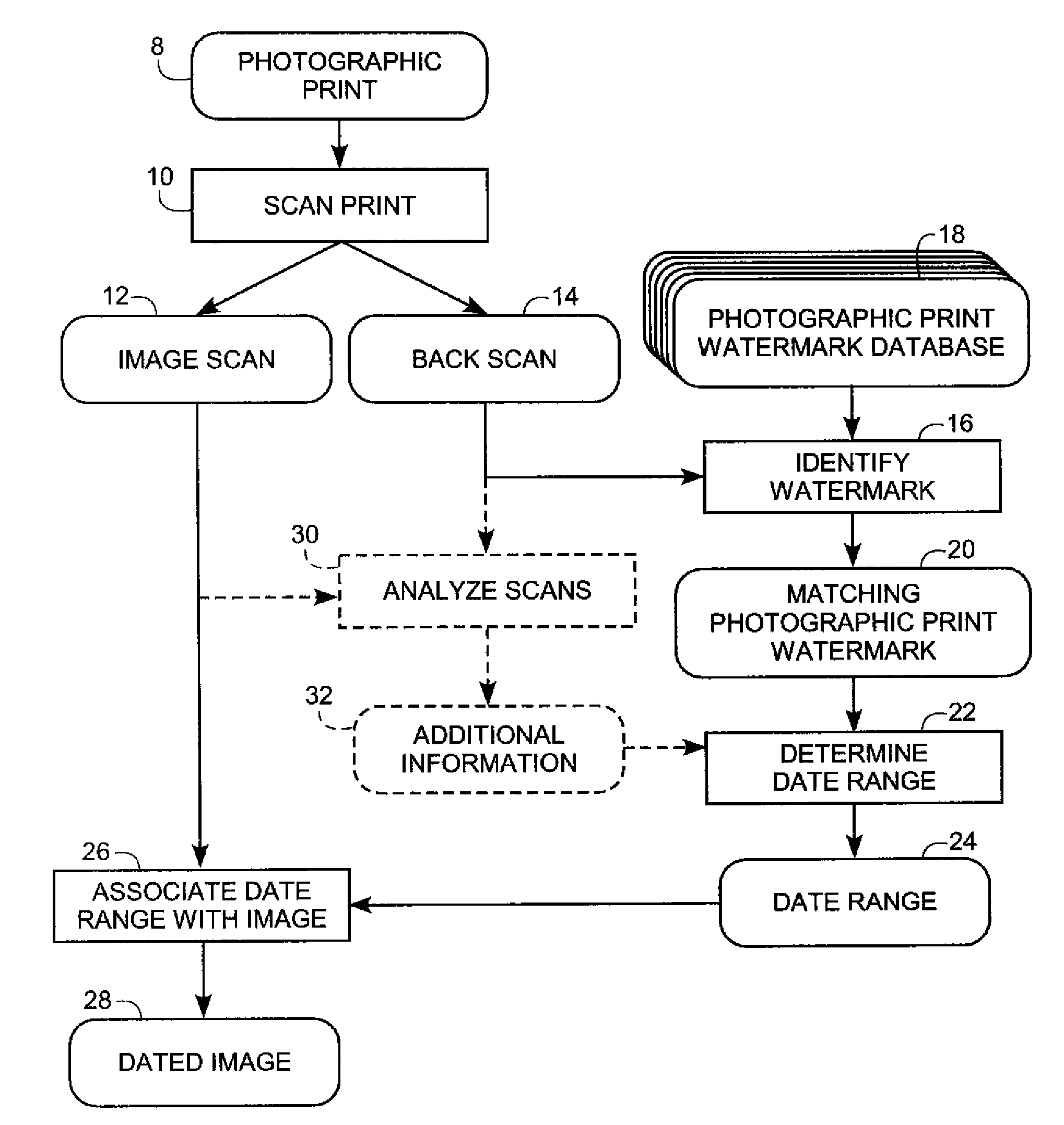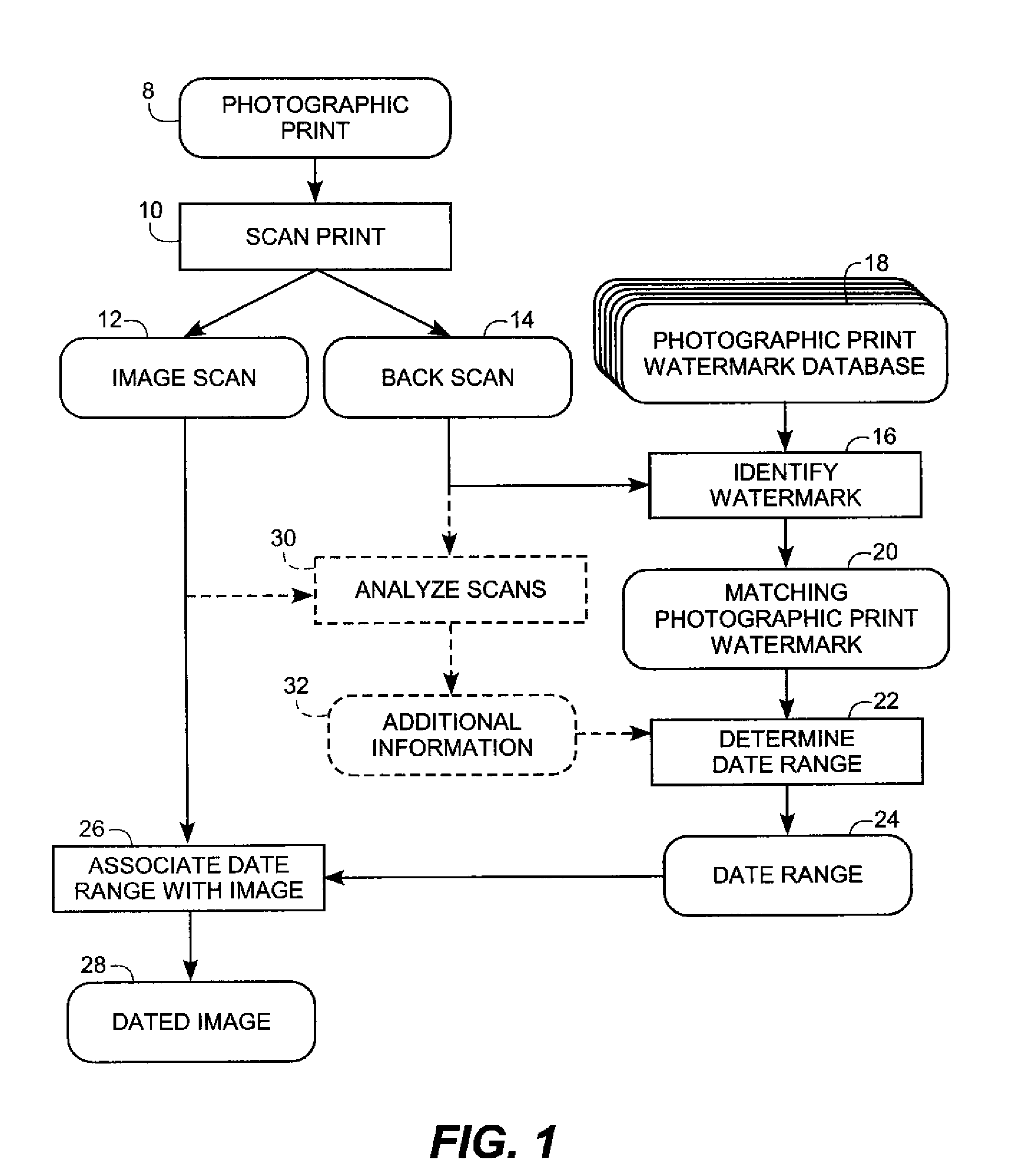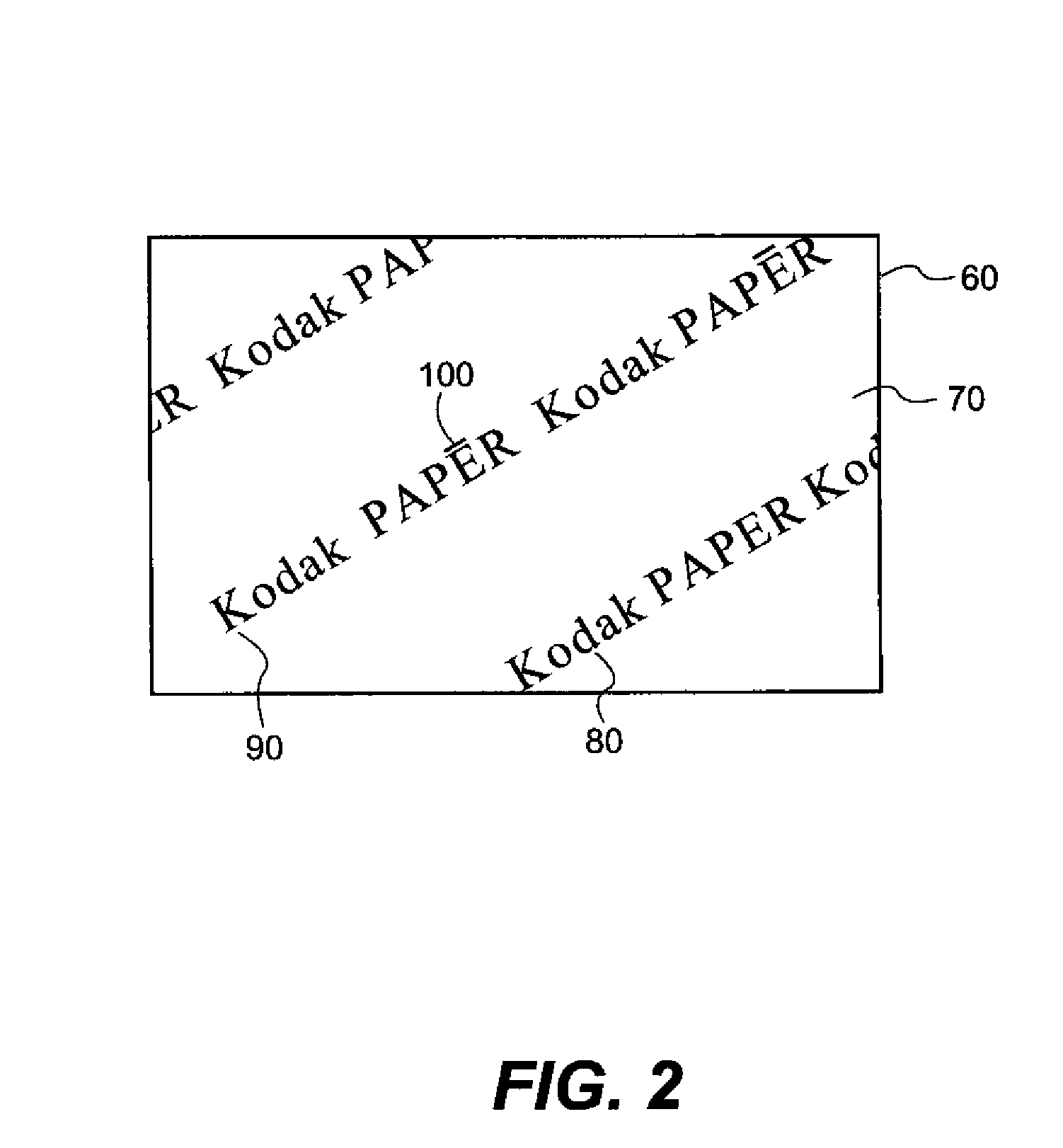Dating images from scanned watermarks
a watermark and image technology, applied in the field of image organization, can solve the problems of not being as useful as smaller groupings, unable to get a large collection of legacy images into a digital form, and unable to meet the needs of large-scale groupings
- Summary
- Abstract
- Description
- Claims
- Application Information
AI Technical Summary
Benefits of technology
Problems solved by technology
Method used
Image
Examples
Embodiment Construction
[0041]There are many applications where it is desirable to digitize photographic prints. For example, a user may have a shoebox full of family photographs and would like to make a digital database of these photographs for viewing and sharing with other family members. Often these photographs are unlabeled, and therefore the user may have no information about the date that the photographs were taken. It is desirable to be able to determine the date of the photographs for historical purposes, as well as to aid in the organization of the digitized images. Manufacturers of photographic print materials often included watermark patterns on the back of photographic prints. The terminology watermark patterns as used in the present application refers to visible patterns that are placed on the back of photographic print materials during the manufacturing process. Such watermark patterns are typically printed on the photographic print materials using some form of printing process, such as offs...
PUM
 Login to View More
Login to View More Abstract
Description
Claims
Application Information
 Login to View More
Login to View More - R&D
- Intellectual Property
- Life Sciences
- Materials
- Tech Scout
- Unparalleled Data Quality
- Higher Quality Content
- 60% Fewer Hallucinations
Browse by: Latest US Patents, China's latest patents, Technical Efficacy Thesaurus, Application Domain, Technology Topic, Popular Technical Reports.
© 2025 PatSnap. All rights reserved.Legal|Privacy policy|Modern Slavery Act Transparency Statement|Sitemap|About US| Contact US: help@patsnap.com



